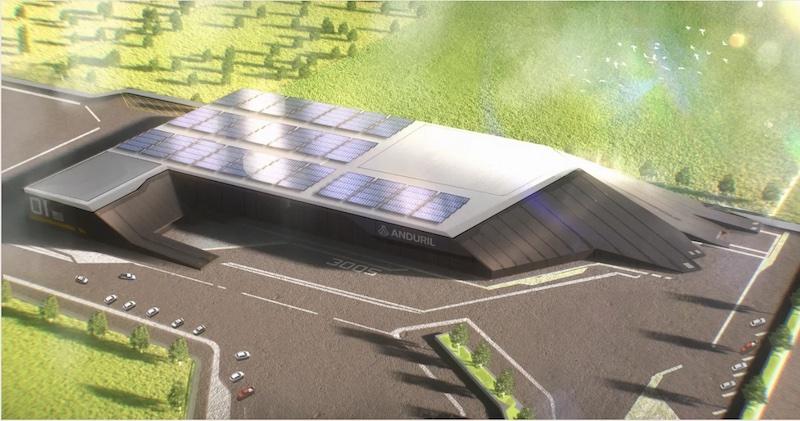Anduril Unveils 'Hyperscale' Arsenal-1 Factory Plan

A rendering of the Arsenal-1 plant.
Anduril Industries has unveiled a plan to “hyperscale” production of munitions and sensors backed by a new $1.5 billion in Series F funding round, company officials said on Aug. 8.
Anduril’s plan centers around Arsenal-1, a massive manufacturing facility designed to produce tens of thousands of autonomous military systems annually.
With a projected floorplan of more than 5 million ft.,2 Arsenal-1 is set to replace Boeing’s commercial aircraft factory in Everett, Washington, as the second-largest building in the world by square footage, trailing only Tesla’s Gigafactory in Austin, Texas.
The facility intends to streamline production by unifying design and manufacturing systems data at one location under Anduril’s proprietary software, Lattice operating system.
Anduril declined a request by Aviation Week to release the height of the new factory, so it is not possible to compare the internal cubic volume of Arsenal-1 to other industry facilities.
"The focus for us is how we produce [our] systems on as common a manufacturing platform as possible," said Chris Brose, Anduril’s chief strategy officer, at a recent media roundtable. A single software and a single production factory, he said, are crucial elements in Anduril’s overall goal of achieving production at "hyperscale."
"We are bringing under one roof the capability to build everything Anduril currently produces across every conceivable variety of autonomous vehicle and weapon, and doing that at hyperscale. This is about moving from large-scale production to hyperscale production."
Brose described the company’s Lattice operating system as the "superpower" behind Anduril’s future manufacturing capabilities.
Arsenal-1 also plans to integrate commercial supply chains to avoid defense-specific choke points. Nearly 90% of the company's products can be developed and manufactured at hyperscale—a term Brose defined as tens of thousands of items—using commercially available components and materials.
Anduril has not yet announced the location of Arsenal-1, which may be the first of several in the Arsenal line. "Arsenal-1 will be located in the U.S.," Brose promised. "Where [remains] to be determined. But Arsenal-1 is not the end of the story. Our hope is that it will be followed quickly by Arsenal-2, which could be in the U.S. or the territory of a U.S. ally or partner."
This announcement follows Anduril’s recent spending to strengthen its production capabilities, including a $75 million investment in its solid rocket motor facility in McHenry, Mississippi, and the opening of an autonomous system production facility in Rhode Island earlier this year.
Anduril’s approach diverges from traditional philosophies of defense manufacturing, focusing on "producibility, flexibility, modularity and adaptability" rather than the complexity that can hamper defense production at a large scale.
"We are never going to focus on building exquisite weapon systems. We are going to focus on building supplementary capabilities that we can get quickly, which are autonomous systems and weapons of all classes," Brose stated. "We need these systems in the tens of thousands."




